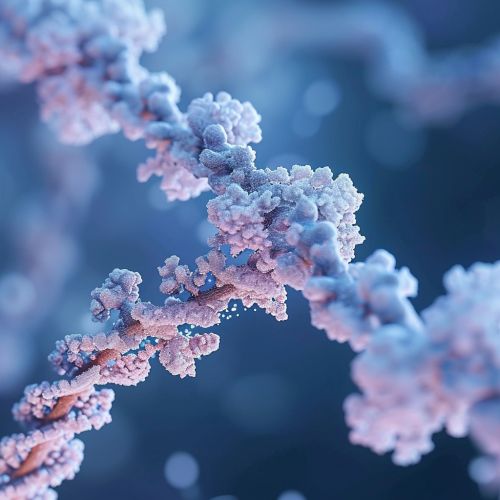Immunoglobulin superfamily
Overview
The Immunoglobulin superfamily (IgSF) is a large group of cell adhesion molecules, receptors, and intracellular signaling molecules. The members of this superfamily are crucial for various biological processes, including immune responses, cell-to-cell communication, and cell adhesion.
Structure
All members of the IgSF share a common structural domain known as the immunoglobulin (Ig) domain. This domain is a compact and stable fold consisting of two layers of antiparallel beta-sheets that are stabilized by a disulfide bond. The Ig domain is one of the most common protein domains in the human genome, highlighting its importance in a wide range of biological functions.


Classification
The IgSF can be divided into four main groups based on their structure and function: the IgG-like receptors, the IgM-like receptors, the IgA-like receptors, and the IgE-like receptors. Each of these groups has distinct characteristics and plays different roles in the immune system and other biological processes.
Function
Members of the IgSF are involved in a wide range of biological processes. They play crucial roles in the immune system, mediating cell-to-cell communication, antigen recognition, and immune response activation. In addition, they are involved in various non-immune processes, such as cell adhesion, growth, and differentiation.
Role in Disease
Alterations in the function or expression of IgSF members can lead to various diseases. For example, mutations in the genes encoding IgSF proteins can result in immune deficiencies, while overexpression or aberrant activation of IgSF receptors can contribute to the development of autoimmune diseases and cancers.
Therapeutic Potential
Due to their crucial roles in immune responses and disease development, members of the IgSF are attractive targets for therapeutic interventions. Several drugs targeting IgSF proteins are currently in clinical use or under development, offering promising strategies for the treatment of various diseases, including cancers and autoimmune disorders.
